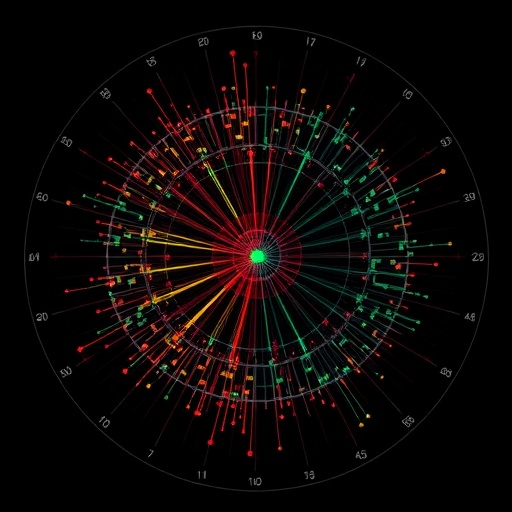Credit: National University of Singapore
A ground-breaking study conducted by researchers from the National University of Singapore (NUS) has revealed a method of using quantum mechanical wave theories to ‘lock’ heat into a fixed position.
Ordinarily, a source of heat diffuses through a conductive material until it dissipates, but Associate Professor Cheng-Wei Qiu from the Department of Electrical and Computer Engineering at the NUS Faculty of Engineering and his team used the principle of ‘anti-parity-time (APT) symmetry’ to show that it is possible to confine the heat to a small region of a metal ring without it spreading over time.
In the future, this newly demonstrated phenomenon could be used to control heat diffusion in sophisticated ways and optimise efficacy in systems that need cooling. The results of the study were published on 12 April 2019 in the prestigious scientific journal Science.
Freezing the spread of heat
“Imagine a droplet of ink in a flowing stream. After a short amount of time you would see the ink spread and flow in the direction of the current. Now imagine if that ink droplet stayed the same size and in the same position as the water flowed around it. Effectively that is what we have accomplished with the spread of heat in our experiment,” explained Assoc Prof Qiu.
The experimental setup of this study is two oppositely rotating metal rings, sandwiched together with a thin layer of grease. The rotating motion of the rings act like the flow of the stream in the scenario. When heat is injected at a point in the system, the thermal energy is able to stay in position because one rotating ring is ‘coupled’ to the counter-rotating ring by the principles of APT symmetry.
The conditions of this experiment are quite precise in order for it to be successful. “From quantum mechanical theory, you can calculate the velocity needed for the rings. Too slow or too fast, and you will break the condition,” said Assoc Prof Qiu. When the conditions are broken, the system acts conventionally, and the heat is carried forward as the ring rotates.
Bucking the trend
Applying the principles of APT symmetry to systems involving heat is a complete departure from the current school of thought in this area. “It’s drastically different from the currently popular research topics. In this field, many groups are working on parity-time (PT) symmetry setups, and almost of them are looking at wave mechanics. This is the first time anyone has stepped out of the domain of waves, and shown that APT symmetry is applicable to diffusion-based systems such as heat,” stated Assoc Prof Qiu.
This demonstration of a fixed area of heat within moving metal seems counterintuitive, as Assoc Prof Qiu admits, “Before this study, people actually thought this was a forbidden area, but we can explain all of it. It doesn’t violate any laws of physics.” In reality, the reason Assoc Prof Qiu and his team were able to control the heat was by introducing an extra degree of freedom into their ingenious experimental setup — the rotation of the rings
“For APT symmetry to become significant in a system, there must be some element of loss and gain within the setup — and they need to be balanced. In a traditional thermal diffusion system, APT symmetry is not consequential because there is no gain or loss degree of freedom. Hence, the mechanical rotation is the key player here,” he explained.
Potential applications and next steps
Many modern technologies require the efficient removal of heat. Mechanical setups like engines, as well as computational and electrical components need to be effectively cooled. Currently, most technologies are cooled with a steady flow of liquid to take away the heat by convection.
“This experiment shows that we need to more careful when determining the flow rate and design of these systems,” Assoc Prof Qiu stated. Whilst his experimental setup contained counter-rotating metal rings, the same principle could be applied to other setups in flux. “The perception is that the circulation will take away the heat simply, but it’s not always necessarily so straightforward,” he added.
Next, the team is looking to increase the size of their experiment. “At the moment our setup is in the range of centimetres, so we want to scale it up to the size of real motors or gearing systems. Gearing systems often have similar counter-rotating mechanisms which will generate heat, so we wish to apply theory to dissipate this heat more efficiently,” Assoc Prof Qiu said.
###
Media Contact
Andrew Breeson
[email protected]
Original Source
http://news.
Related Journal Article
http://dx.




